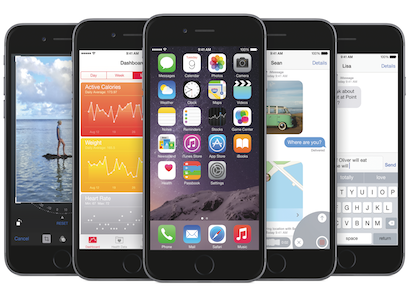 Apple Inc’s iPhone sales fell for the second straight quarter, although the 15 per cent drop was less than feared.
Apple Inc’s iPhone sales fell for the second straight quarter, although the 15 per cent drop was less than feared.
The company’s total revenue dropped 14.6 per cent in the third-quarter ended June 25, also declining for the second quarter in a row. The company’s operating income slid by 28.2 per cent.
Apple said it sold 40.4 million iPhones in the third quarter, more than the average analyst forecast of 40.02 million, according to research firm FactSet StreetAccount.
Apple had reported a 16.3 per cent drop in iPhone sales in the previous quarter, the first decline since the smartphone was launched in 2007.
Sales of iPhones account for about two-thirds of the total sales of the world’s most valuable publicly traded company.
Apple’s iPhone lineup includes the iPhone 6S and 6S Plus, as well as the smaller and cheaper iPhone SE.
Apple’s quarterly net profit fell 27 per cent to US$7.8 billion (A$10.44 billion), while revenue of US$42.36 billion beat analyst’s estimates of US$42.09 billion, according to Thomson Reuters I/B/E/S.
Sales in Greater China, once touted as Apple’s next growth engine, decreased 33.1 per cent, compared with a 112.4 per cent growth in the year earlier quarter and a near 26 per cent fall in the second quarter.
Apple’s services business, which includes the App Store, Apple Pay, iCloud and other services generated nearly US$6 billion in revenue, up 18.9 per cent from the previous year.
The company forecast fourth-quarter revenue of US$45.5 billion to US$47.5 billion, largely above Wall Street’s average estimate of US$45.71 billion, according to Thomson Reuters I/B/E/S.
The forecast, covering the quarter ending September, will likely include at least the first weekend of sales of the iPhone 7 range, which Apple is expected to launch in September.
Up to Tuesday’s close, Apple’s shares had fallen about 8.2 per cent since the start of the year.
Neil Saunders, CEO of Conlumino, said Apple’s sales decline come as no real surprise given that Apple has launched very few significant products or initiatives since the last reporting period.
Saunders said that they are sequentially worse than last quarter is a cause for some concern, especially so as all geographies, bar Japan, are now in strong decline.
The one bright spot in an otherwise gloomy set of numbers comes from the services segment, Saunders said.
“Here revenue grew by 19 per cent, thanks to more Apple Music subscribers and the strong performance of the App Store. However, the ground gained here is nowhere near enough to make up for the decline in product revenue, which is where Apple takes the bulk of its sales and makes most of its profit.”
On the product front, the numbers make for gloomy reading, with iPhone sales down 23 per cent in revenue terms, Mac sales down 13 per cent, and other product sales down 16 per cent. Even in China, where product demand should be buoyant because of lower penetration, sales dipped by a third.
“All of this is characteristic of a company that, while still highly successful, has simply lost the edge that once persuaded consumers to continually upgrade and buy into more expensive pieces of kit,” Saunders said.
According to Sauders, in their view, Apple has become too obsessed with the technical minutiae of products rather than developing radically new devices which capture the imagination, and cash, of consumers.
“Admittedly this is not for want of trying, Apple Watch was supposed to be one of the next big things. However, from our analysis, its performance has been disappointing,” he said.
“We put this down to the fact that Apple Watch doesn’t really do very much; in most cases it simply replicates what can be done on a phone, albeit less effectively. As such, other than as a status symbol, most consumers do not see the value in spending hundreds of dollars simply to remove the effort of having to lift up their phones.”
“This is a great example of Apple’s genius in producing what remains a technically impressive and aesthetically pleasing device, while missing the bigger picture of how that device fits into people’s lives.”
Saunders said if Apple has to get back to stellar growth, it needs either a radical step change in its existing product line-up or needs to come up with a completely new device that creates a whole new market. He said this is easier said than done, but there are emerging areas of technology – like virtual reality – where Apple should be at the forefront of developments.
On the retail side, Saunders said Apple’s latest store format is impressive and provides just the type of experience that modern consumers enjoy and will engage with.
“However, without great products this new format will not deliver very much. As such, Apple needs to put the same sort of forward thinking into its kit as it has done its new shops.”
“As much as this may all sound harsh and critical, it is simply because Apple set such a high benchmark to begin with. It remains a very impressive business and retailer, but it is one that is in desperate need of that magical ‘one last thing’ to transform its trend of declining sales.”
Access exclusive analysis, locked news and reports with Inside Retail Weekly. Subscribe today and get our premium print publication delivered to your door every week.





